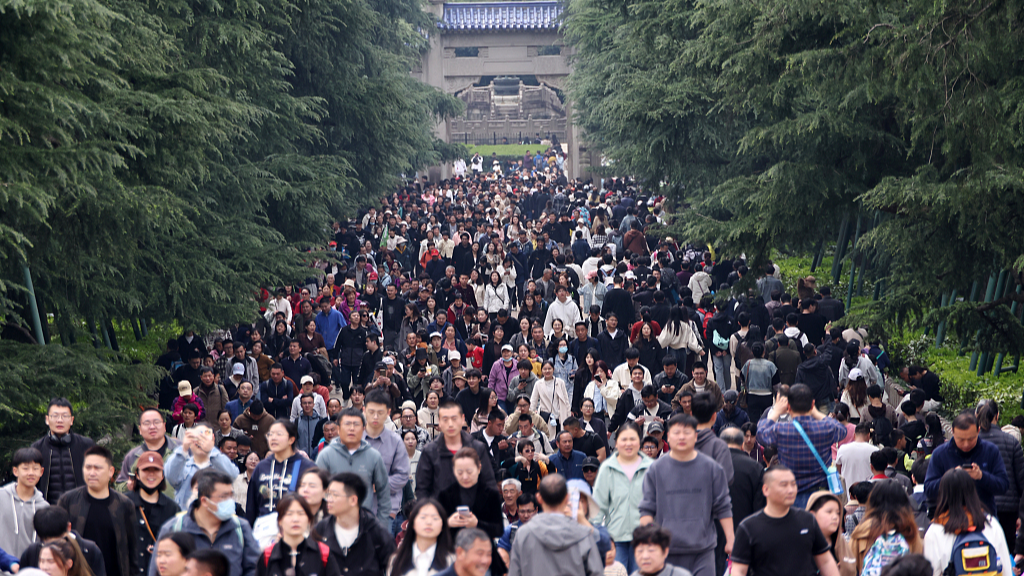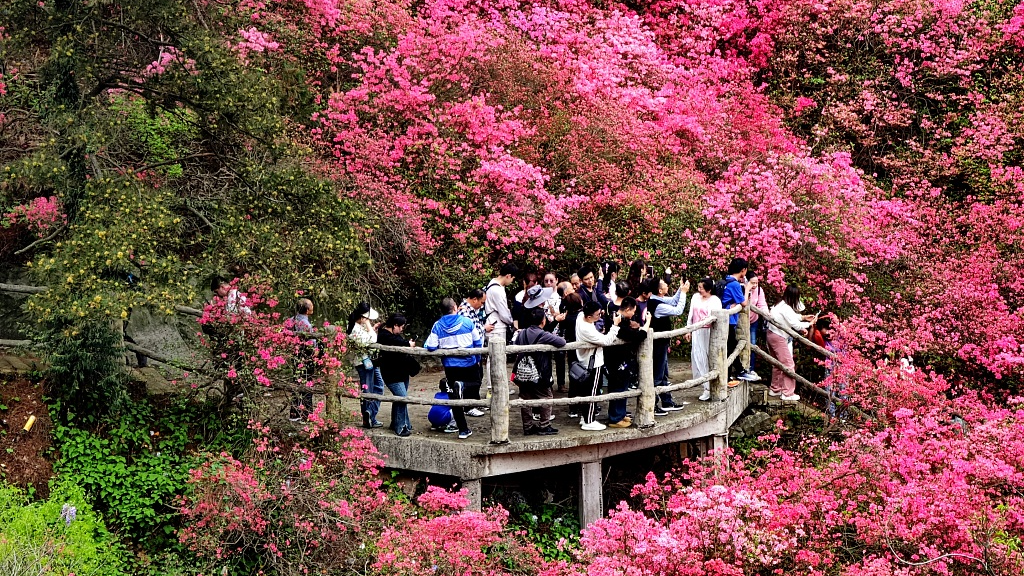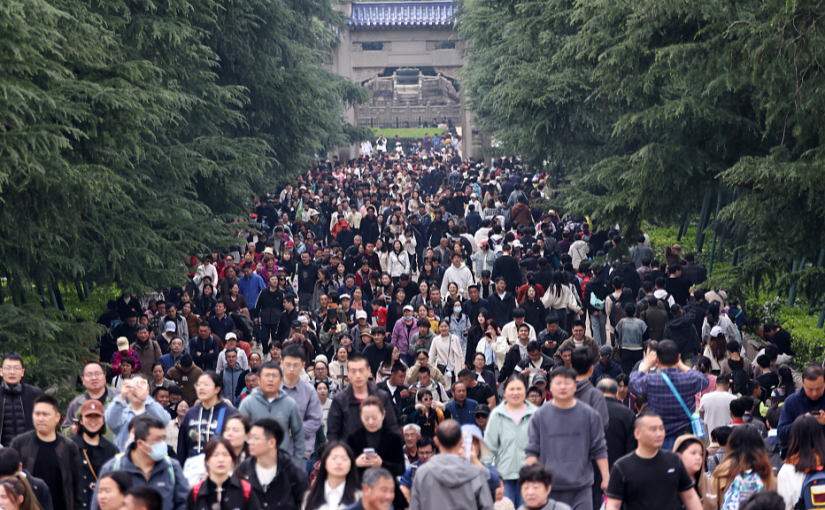 Tourists at the Sun Yat-sen Mausoleum in Nanjing City, east China’s Jiangsu Province, April 7, 2024. /CFP
Tourists at the Sun Yat-sen Mausoleum in Nanjing City, east China’s Jiangsu Province, April 7, 2024. /CFP
Tourists at the Sun Yat-sen Mausoleum in Nanjing City, east China’s Jiangsu Province, April 7, 2024. /CFP
China reported a significant surge in travel and consumption during the three-day Qingming Festival holiday, which concluded on Saturday, according to official data.
Qingming Festival, or Tomb-Sweeping Day, is an important occasion for Chinese to honor their ancestors. Many also spend the three-day holiday on leisure travel.
China saw about 119 million domestic passenger trips during the three-day holiday, up 11.5 percent from the same period in 2019, according to data from the Ministry of Culture and Tourism. The data also showed domestic revenue during the period totaled 53.95 billion yuan (around $7.6 billion), up 12.7 percent from the same period in 2019.
Inbound and outbound tourism also saw a remarkable increase during the holiday as many residents in Hong Kong and Macao special administrative regions and overseas Chinese in Southeast Asia returned to their hometowns to worship ancestors, visit relatives and friends and go sightseeing.
Figures from the ministry showed that the Chinese mainland saw 1.04 million inbound trips and 992,000 heading to overseas destinations.
Shanghai, Beijing, Guangzhou, Hangzhou, Xiamen and Kunming were among the most popular destinations for inbound tickets, according to data from the travel platform LY.com. Meanwhile, data from another travel portal, Tuniu, said Thailand, Japan and the Maldives were the top three popular overseas tourist destinations.

Short-distance journeys favored
short-distance journeys stood out among the domestic tourist trips, as many families prefer nearby cities or the surrounding countryside to enjoy a leisurely and relaxing holiday.
Data from Chinese online travel agency Ctrip showed that, during the holiday, local travel orders increased by 211 percent, rural travel orders increased by 239 percent, and bookings for travel to nearby places as destinations increased by 350 percent.
Data from another travel portal, Tuniu, also showed more taking short-distance journeys. According to its figures, the number of trips taking one to two days accounted for nearly 71 percent, and the number of trips bound for nearby places made up 50 percent.
Another thing worth noting is that some lesser-known tourist places, such as Zibo in the eastern province of Shandong, famous for its barbecue, and Tianshui in northwest China’s Gansu Province, famous for its malatang, have become viral destinations over the holiday because of their delicious cuisines, cultural charm and entertaining events.
The destination cities with a growth in tourist volume of more than 50 percent are Taian, Zibo, Tianshui, Kaifeng, and Jingdezhen, according to data from the Ministry of Culture and Tourism.
Among them, the number of travel orders to Tianshui increased by more than 21-fold year on year, according to data from Qunar, a Chinese online travel agency.
 Tourists enjoy spring in Wuhan City, central China’s Hubei Province, April 6, 2024. /CFP
Tourists enjoy spring in Wuhan City, central China’s Hubei Province, April 6, 2024. /CFP
Tourists enjoy spring in Wuhan City, central China’s Hubei Province, April 6, 2024. /CFP
Consumption potential unleashed
The boom in tourism boosts local consumption. Data from Tujia, a homestay booking platform, indicated that homestay bookings in Tianshui have increased by 18.8-fold year on year as of April 6, which also drove up the bookings in nearby cities, including Lanzhou and Longnan.
Overall, data from e-commerce platform Meituan said the average daily consumption during the holiday increased by 39 percent year on year, with Beijing, Shanghai, Shenzhen, Guangzhou and Chengdu among the top cities in China in terms of consumption scale.
Meanwhile, China’s box office revenue during the holiday reached a record 834 million yuan as of 9 p.m. on April 6, surpassing the previous highest earning of 822 million yuan recorded in 2021, according to film data platform Beacon.
Multiple measures have been taken to ensure a smooth and convenient travel experience. In scenic spots in Kaifeng City, central China’s Henan Province, local authorities announced 44 free parking lots and increased the number of berths by more than 7,000 for tourists.
Also, to facilitate the travel of electric vehicle owners, who made up part of the around 277 million self-driving trips during the holiday, the power departments in provinces, including Hebei and Jiangsu, added charging piles in highway service areas to alleviate charging pressure during peak hours.
